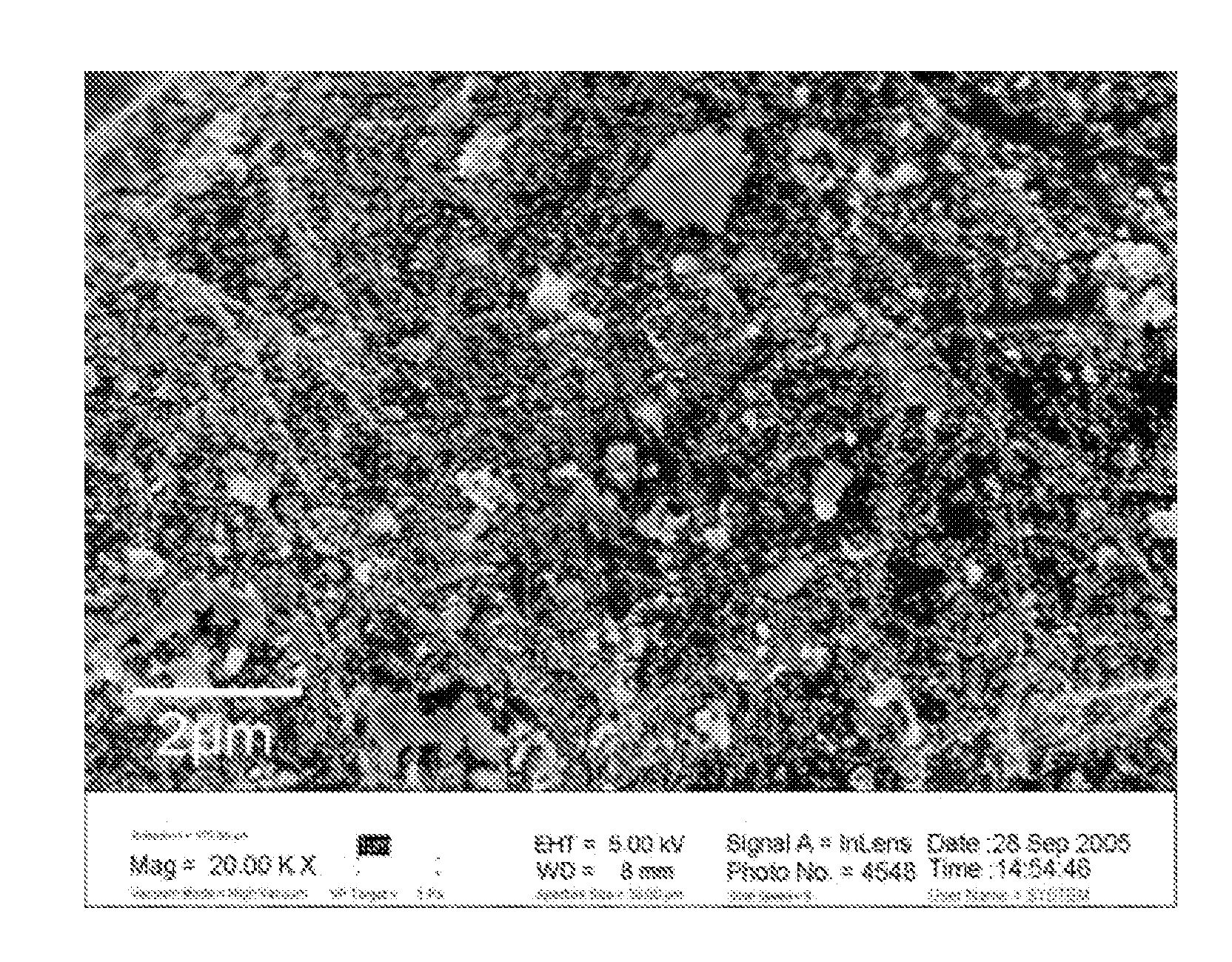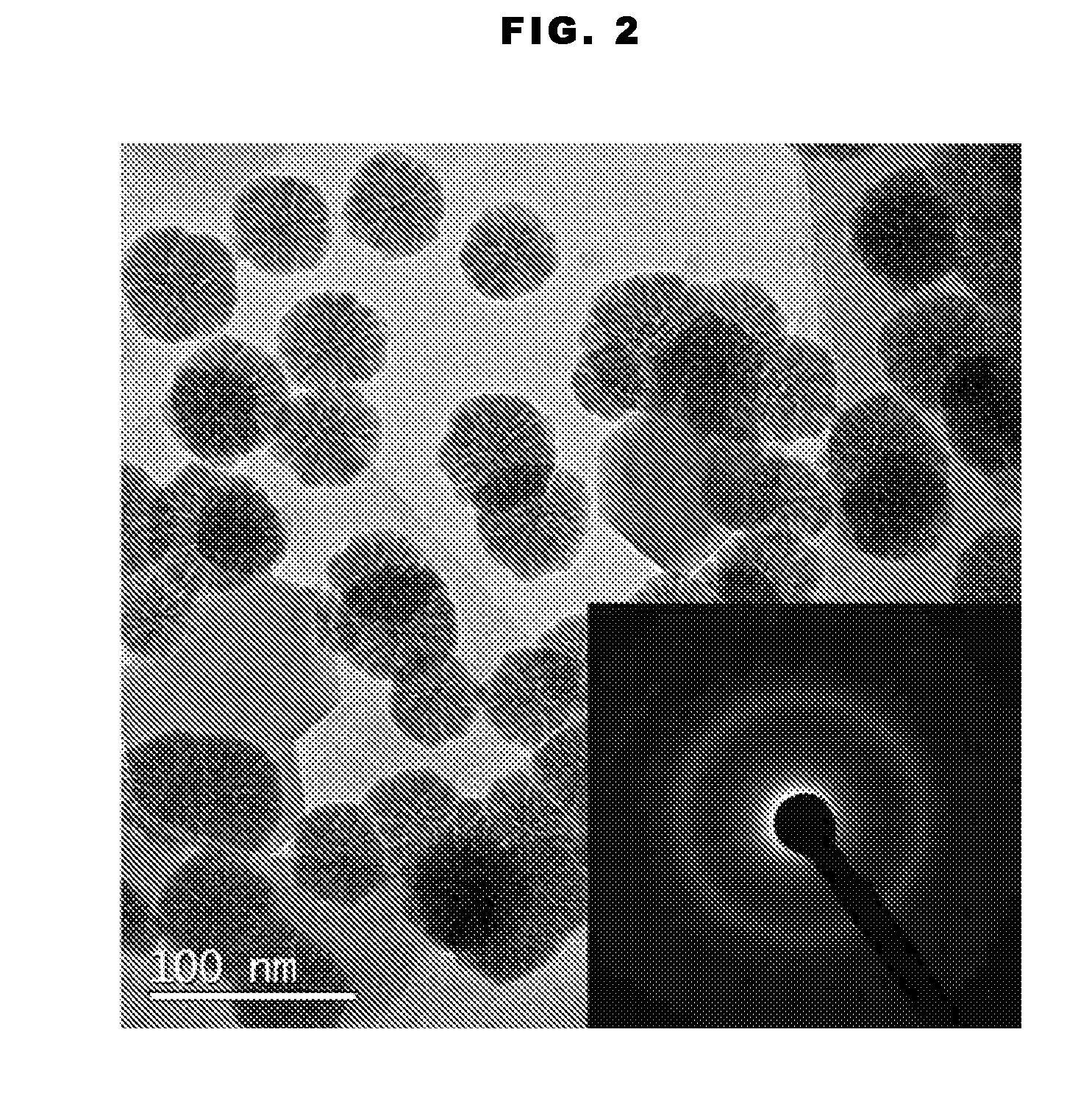Supported amorphous ni-b alloy catalyst, its preparation and use
a technology of alloy catalyst and supported amorphous alloy, which is applied in the direction of catalyst activation/preparation, physical/chemical process catalyst, metal/metal-oxide/metal-hydroxide catalyst, etc., can solve the problems of high energy consumption, environmental pollution, and the need to activate alloys prepared with rapid quenching methods, etc., to achieve safe use, high catalytic activity, good mechanical properties
- Summary
- Abstract
- Description
- Claims
- Application Information
AI Technical Summary
Benefits of technology
Problems solved by technology
Method used
Image
Examples
example 1
[0041] Expanded graphite was prepared from flaky graphite, potassium permanganate and sulfuric acid. 10.0 g flaky graphite with particle sizes around 200 μm, 2.0 g potassium permanganate and 60.0 g sulfate acid were mixed in a 100 ml flask at 45° C., stirring for 30 minutes. It was then filtered, washed with water to pH 7 and dried at 120° C. The filtrate was subject to microwave radiation (at 750 W) in a microwave oven for 15 second to obtain worm-like expanded graphite material, which was then added to boiling water under vigorous stirring for about 2 hours or until the expanded graphite crashed into small particles. The EG particles were sieved to around 200 μm and ready for use. Of course, the conditions and parameters specified above can be modified by people skilled in the art and still be able to achieve satisfactory results.
[0042] 5.0 g expanded graphite particles as prepared above was placed in 100 ml water containing 0.016 g silver nitrate, soaked with vigorous stirring f...
example 2
[0048] The precursor Ag2O / EG prepared in Example 1 was added into the electroless plating solution directly without being further treated with ultrasonication. The plating solution is 340 ml. The other steps were the same as those described in Example 1. The hydrogenation result is presented in Table 1.
example 3
[0049] The composition of the electroless plating solution was changed as follows: 1.32 g NH2CH2CH2NH2, 1.440 g NiSO4.6H2O, 3.7 g NaOH, 0.451 g KBH4, and 90 ml distilled water. The other steps were the same as those described in Example 2. The hydrogenation result is presented in Table 1.
PUM
| Property | Measurement | Unit |
|---|---|---|
| diameter | aaaaa | aaaaa |
| size | aaaaa | aaaaa |
| specific surface area | aaaaa | aaaaa |
Abstract
Description
Claims
Application Information
 Login to View More
Login to View More - R&D
- Intellectual Property
- Life Sciences
- Materials
- Tech Scout
- Unparalleled Data Quality
- Higher Quality Content
- 60% Fewer Hallucinations
Browse by: Latest US Patents, China's latest patents, Technical Efficacy Thesaurus, Application Domain, Technology Topic, Popular Technical Reports.
© 2025 PatSnap. All rights reserved.Legal|Privacy policy|Modern Slavery Act Transparency Statement|Sitemap|About US| Contact US: help@patsnap.com



